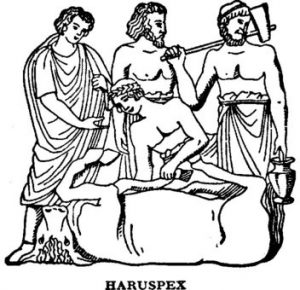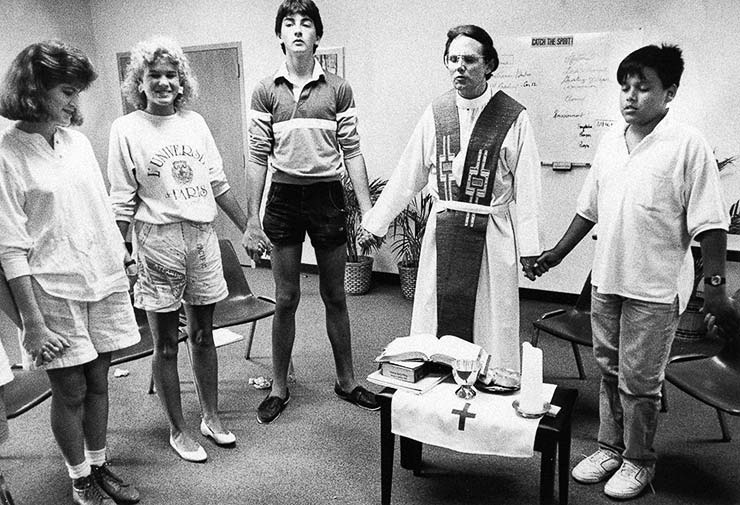 At LifeSite there is an interview with Peter Kwasniewski. He opines that the decentralization of authority in liturgical matters could recreate an environment in the Church much like the 70’s.
At LifeSite there is an interview with Peter Kwasniewski. He opines that the decentralization of authority in liturgical matters could recreate an environment in the Church much like the 70’s.
Of course that would accelerate the growth of desire for traditional forms. Younger Catholics don’t have the baggage of the 70’s. Nor do they pine for those halcyon days of protests, revolt against authority and Vatican II.
The latest move of Pope Francis with Magnum principium was a harbinger. His Holiness seems to be lining up pretty closely with the will of the wealthy German bishops conference. If that is indeed the case, then we are in for a rough ride, quod Deus avertat.
Now we wait for the next portent in this series of signs of the times.
As I put on my haruspex cap and slit the belly of this bull, one such portent could be a project to rebuild the Temple in Jerusalem or, in a less apocalyptic way, a change of personnel in, say, the Office of Pontifical Liturgical Celebrations.



































What a horrible picture. We actually allowed that? And we wonder why Eucharistic piety is so low and belief in the Real Presence doubted. Seriously, these last 40 years have seen liturgical horrors that often words alone can’t describe. Together with you Fr Z we pray.
That picture appears to have been taken around 1987. I wonder whether anyone in the picture or who attended that retreat is a practicing Catholic today, thirty years later.
This picture can remind us that, as bad as things can seem, we’ve come a long way.
The bottom photo – with priest holding hands and a small “altar” – is something I actually experienced in my Junior High School (aka Middle School) CCD class in the late 1960’s. It took place in a private residence as I recall. It was a very sad and bad time for Catholicism.
Pope Francis direction actually move the Church in a much more traditional (afterall Church tradition did not begin at Trent) direction where local customs and adaptation was what allowed the Church to truly universal and diverse ~ the development of the range of Eastern Catholic rites for example and even in Western Europe there was not this obsession on uniformity. Our unity is expressed through baptism and our Common Creed ~ empowering the local Church in areas that our appropriate to them is completely consistent with a sound traditional ecclesiology and also the very Catholic emphasis on subsidiary as a governing principle and this includes, of course, Church governance
More centralization = greater accountability. Centralization of authority better addressed and helped to eliminate the potential for child predation and coverups.
Decentralization would have the opposite effect, intended or not.
Pope Francis should resist the temptation to decentralize. Better that local ordinaries have less say in the goings on in their dioceses than children be placed in harms way, no?
First and foremost, Saint Francis was humble.
Fr. Z’s comment: …a change of personnel in, say, the Office of Pontifical Liturgical Celebrations.
I hope you don’t mean a change in the head of that office. I told myself that as long as he was head, I was not going to freak out about this pope.
Antonin, that may be true, but whatever varieties of liturgy exist within Holy Mother Church, they must not suck.
Antonin, the problem with decentralizing the liturgy is that much of the Catholic episcopacy is either heterodox, liturgically incompetent or tolerant of heterodoxy in parishes. Authority over the liturgy is the last thing under these circumstances that should be decentralized. Ironically, this is the result of overcentralization of church governance – obedience and loyalty to Rome trumps adherence to the apostolic faith. Decentralization requires, first of all, an orthodox hierarchy and secondly, bishops who hold each other accountable at the local level and perhaps most importantly a laity that will not tolerate liturgical abuse. We have none of this.
A short diversion:
Byzantium was once rocked by iconoclasm, an impetus that seems to have much in common in its driving force with what happened here in the 60’s. Iconoclasm followed into two periods, one from about 730-787 and the second around thirty years later, from 814-42.
I think there’s an analogy here. The second period was not as intense, and was begun by those who had grown up during the first period. They however did not hold the youth and the whole movement died with a whisper. The iconoclasts won the most important institutional battles…including the ascension of one of their own as Emperor, but they lost anyhow. People tend to reach their strongest institutional power in their 60’s, but that power may be more apparent than real if they mistake their views for the views of everyone.
A similar dynamic may be taking place here. The revolutionary phase is the first phase…and in the current situation that lasted from around 1965-2001 (taking Liturgiam Authenticam as a break) and a second phase starting when the revolutionaries come into their apogee now. However, those who might have been their foot soldiers are now unlikely to practice…leaving a remnant laity that has little patience for the passions that drove the 60’s. This may be the last hurrah.
Pingback: THVRSDAY CATHOLICA EDITION – Big Pulpit
Yeah, so I was at many of those “liturgies” in the 70’s as a Jesuit novice/scholastic. California Province, no less. I thought then that they were evidence of bold reform. I am grateful that I now attend Holy Mass celebrated in the extraordinary form weekly at St. Mary’s Parish in Arcata, CA, heart of liberal insanity (the town, not the diocese), recently established by our young parochial vicar, who is wholly orthodox and a true blessing. I don’t pretend to know what trials we must endure, I only know that as our Blessed Lord promised us, He will be with until the end of time. As St. John Paul II often reminded us, be not afraid.
“That picture appears to have been taken around 1987. I wonder whether anyone in the picture or who attended that retreat is a practicing Catholic today, thirty years later.”
In fairness, probably not too different than the stat’s on LifeTeen.
I think pjthom81 is on to something. The current craziness reminds me of a death rattle, like the last gasp of the liturgical innovators before they finally go riding into the dustbin of history.